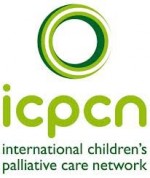The article by Ian Johnston appeared on the Independent newspaper website on 28th January 2016. The first two paragraphs:
Children and adolescents are twice as likely to exhibit suicidal or aggressive behaviour if they take commonly prescribed antidepressants, according to a new study.
Researchers also found that reports on clinical trials by drug companies frequently downplayed the most serious side-effects, which they only discovered by looking at the raw patient data.
Read the full news article: http://www.independent.co.uk/news/science/children-given-antidepressants-are-twice-as-likely-to-become-suicidal-claims-new-study-a6838291.html
BMJ Paper
Suicidality and aggression during antidepressant treatment: systematic review and meta-analyses based on clinical study reports
By Tarang Sharma, Louise Schow Guski, Nanna Freund and Peter C Gøtzsche
Abstract:
Objective To study serious harms associated with selective serotonin and serotonin-norepinephrine reuptake inhibitors.
Design Systematic review and meta-analysis.
Main outcome measures Mortality and suicidality. Secondary outcomes were aggressive behaviour and akathisia.
Data sources Clinical study reports for duloxetine, fluoxetine, paroxetine, sertraline, and venlafaxine obtained from the European and UK drug regulators, and summary trial reports for duloxetine and fluoxetine from Eli Lilly’s website.
Eligibility criteria for study selection Double blind placebo controlled trials that contained any patient narratives or individual patient listings of harms.
Data extraction and analysis Two researchers extracted data independently; the outcomes were meta-analysed by Peto’s exact method (fixed effect model).
Results We included 70 trials (64 381 pages of clinical study reports) with 18 526 patients. These trials had limitations in the study design and discrepancies in reporting, which may have led to serious under-reporting of harms. For example, some outcomes appeared only in individual patient listings in appendices, which we had for only 32 trials, and we did not have case report forms for any of the trials. Differences in mortality (all deaths were in adults, odds ratio 1.28, 95% confidence interval 0.40 to 4.06), suicidality (1.21, 0.84 to 1.74), and akathisia (2.04, 0.93 to 4.48) were not significant, whereas patients taking antidepressants displayed more aggressive behaviour (1.93, 1.26 to 2.95). For adults, the odds ratios were 0.81 (0.51 to 1.28) for suicidality, 1.09 (0.55 to 2.14) for aggression, and 2.00 (0.79 to 5.04) for akathisia. The corresponding values for children and adolescents were 2.39 (1.31 to 4.33), 2.79 (1.62 to 4.81), and 2.15 (0.48 to 9.65). In the summary trial reports on Eli Lilly’s website, almost all deaths were noted, but all suicidal ideation events were missing, and the information on the remaining outcomes was incomplete.
Conclusions: Because of the shortcomings identified and having only partial access to appendices with no access to case report forms, the harms could not be estimated accurately. In adults there was no significant increase in all four outcomes, but in children and adolescents the risk of suicidality and aggression doubled. To elucidate the harms reliably, access to anonymised individual patient data is needed.
More information about the paper: http://www.bmj.com/content/352/bmj.i65




